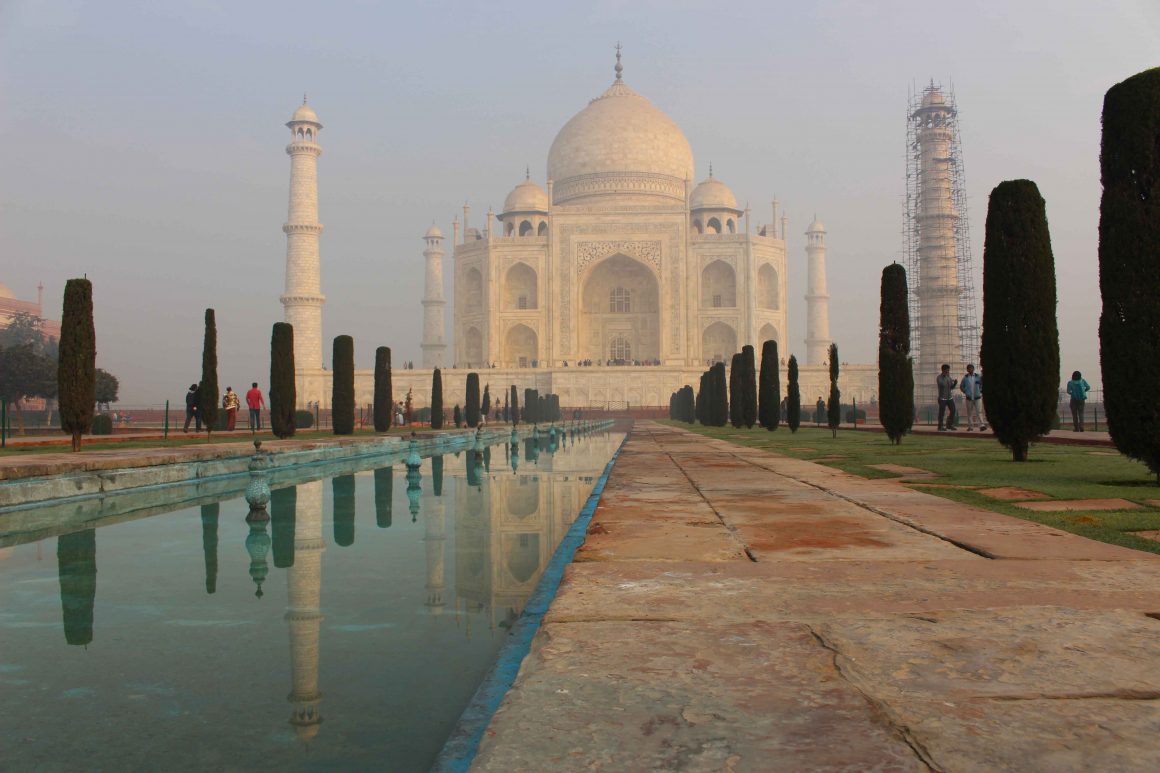“Either we will shut down the Taj Mahal or you demolish or restore it”, a two-member bench comprising Justices M B Lokur and Deepak Gupta were reported to have said while considering a petition that called for the proper maintenance of the16th century mausoleum, which has over the years changed colour from white to yellowish, brown and then green because of pollution in its environs. The bench, however, did not clarify under which law it was asking the government to demolish India’s pride possession. A report, for Different Truths.
A day before senior Supreme Court judge Justice Ranjan Gogoi spoke about the need for ‘noisy judges and independent journalists’, describing them as democracy’s first line of defence, a bench of the Apex Court made noise over Taj Mahal. It was not clear whether the noise was of the same type that Justice Gogoi, in line to become the next Chief Justice of India, had referred to. But it was some unseemly noise.
“Either we will shut down the Taj Mahal or you demolish or restore it”, a two-member bench comprising Justices M B Lokur and Deepak Gupta were reported to have said while considering a petition that called for the proper maintenance of the16th century mausoleum, which has over the years changed colour from white to yellowish, brown and then green because of pollution in its environs. The bench, however, did not clarify under which law it was asking the government to demolish India’s pride possession.
The court criticised the Uttar Pradesh government for failing to prepare a vision document to preserve and protect the monument and directed the Centre to furnish details of the steps taken and the action required to protect the structure. The bench then went into a totally uncharted territory. It compared the beauty of Taj Mahal with that of the famous Paris landmark Eiffel Tower, which was likened to a TV tower. “Eighty million go to watch Eiffel Tower which looks like a TV Tower. Our Taj is more beautiful. If you had looked after it your foreign exchange problem would have been solved,” the two judges were reported to have remarked.
We must be thankful that no Mughal fanatics have so far come out condemning the ’move to demolish’ Taj Mahal, which, considering the prevailing political climate in the country, could have been a distinct possibility. The Yogi government has been under a cloud for allegedly undermining the appeal of Taj Mahal, the pristine beauty of which had inspired right from its creator Shah Jahan to its last visitor.
As Justice Gogoi suggested, we do need judges who make noise, but not exactly this kind of noise. Judges cannot get into emotional outbursts when they consider hair-splitting issues of law and justice. Probably the noise that Gogoi had in mind was in a different class: similar to the one he himself raised in January this year when four judges under the leadership of now-retired Justice Chelameswar held an unprecedented press conference, which they said they were doing as “discharge of debt to the nation”, raising serious questions about the functioning of the highest judicial institution in the country.
Justice Gogoi’s comment on judges and journalists during a commemorative lecture was in reference to an article by The Economist and reproduced by Indian Express, which highlighted the importance of ‘independent judges and noisy journalists’ as the first line of defence of democracy. “I agree but will only suggest a slight modification in today’s context – not only independent judges and noisy journalists, but even independent journalists and sometimes noisy judges”, he said.
The judge said that there are two Indias, which are in conflict with each other. “There is an India that believes that it is the New Order and there is an India that lives below a ridiculously drawn Poverty Line on daily wages in night shelters with no access to education or healthcare, let alone access to the Courts of Law. The ambivalence is intriguing.” He said. The time for a constitutional moment for the Indian judiciary has been long overdue in view of the graphic disparity in the dispensation of justice.
“Not a reform but a revolution is what it needs, to be able to meet the challenges on the ground and to keep this institution serviceable for a common man and relevant for the nation. For the effectiveness of the judgments to show, the justice dispensation system has to be made more result oriented i.e. to say, more focused on enforcement”, he said.
He then went on to some of the issues raised at the January presser, including the ‘inefficiency’ and ‘slow processes’ in the administration of justice on a day to day basis. “The judiciary today is not a poor workman who blames his tools, but it is a workman with no tools.” Justice Gogoi raised an alarm that a fair share of India’s demographic dividend is being unjustifiably lodged in the jails and mostly for petty or less serious offences. As much as 67 percent of the prison population in the country are undertrials, mostly belonging to the underprivileged classes and 47 percent of them are between the age of 18 and 30 years. The ratio of such people is only 7 percent in the UK although the US has a high rate of incarceration at 22.7 percent. Justice Gogoi quoted these figures to highlight the need to make legal awareness and empowerment of the marginalised people in our vastly unequal society an observable reality.
K Raveendran
©IPA Service
Photo from the Internet





 By
By


 By
By